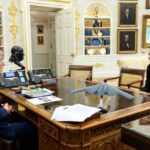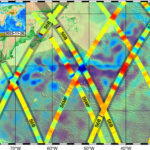A new dataset from the Green Bank Telescope (GBT) is now publicly available, opening the door for scientists worldwide to make discoveries in one of the richest molecular clouds in
phys.org17- Page
From dew at dawn to a foggy mirror after a shower, condensation is part of our daily lives on Earth. In space, microgravity alters how heat flows through gases and
Using high-resolution data from the one-meter New Vacuum Solar Telescope (NVST), a research team led by Prof. Yan Xiaoli from the Yunnan Observatories of the Chinese Academy of Sciences (CAS)
New research from Rice University suggests that the giant planet Jupiter reshaped the early solar system in dramatic ways, carving out rings and gaps that ultimately explain one of the
Every year, we shoot several thousand satellites and other objects out into space. When satellites die, they become space trash that threatens aerospace safety.
In the 1960s, Frank Sinatra’s song “Fly Me to the Moon” became closely associated with the Apollo missions. The optimistic track was recorded in 1964, when US success against the
Astronomers using the James Webb Space Telescope (JWST) have captured the most detailed look yet at how galaxies formed just a few hundred million years after the Big Bang—and found
The new Copernicus Sentinel-4 mission has delivered its first images, highlighting concentrations of atmospheric nitrogen dioxide, sulfur dioxide and ozone. Despite being preliminary, these images mark a major milestone in
Some ancient marine organisms produced mysterious magnetic particles of unusually large size, which can now be found as fossils in marine sediments.
A new study has revealed how phosphorus, a nutrient essential for photosynthesis, surged into ancient oceans and started Earth’s first major rise in atmospheric oxygen more than 2 billion years
-
 012024 in Review: Highlights from NASA in Silicon Valley
012024 in Review: Highlights from NASA in Silicon Valley -
 02Panasonic Leica Summilux DG 15mm f/1.7 ASPH review
02Panasonic Leica Summilux DG 15mm f/1.7 ASPH review -
 03From Polymerization-Enabled Folding and Assembly to Chemical Evolution: Key Processes for Emergence of Functional Polymers in the Origin of Life
03From Polymerization-Enabled Folding and Assembly to Chemical Evolution: Key Processes for Emergence of Functional Polymers in the Origin of Life -
 04How New NASA, India Earth Satellite NISAR Will See Earth
04How New NASA, India Earth Satellite NISAR Will See Earth -
 05And Thus Begins A New Year For Life On Earth
05And Thus Begins A New Year For Life On Earth -
 06Astronomy Activation Ambassadors: A New Era
06Astronomy Activation Ambassadors: A New Era -
07SpaceX launch surge helps set new global launch record in 2024





